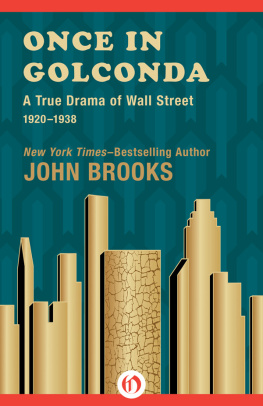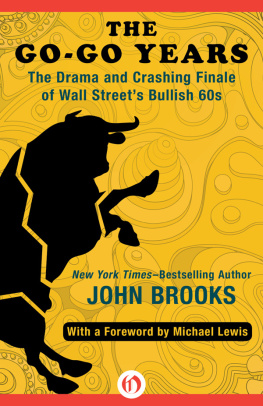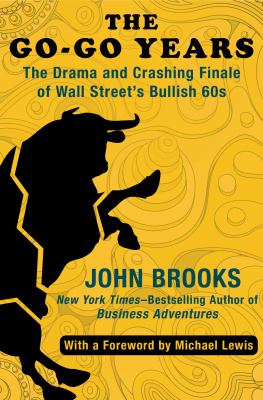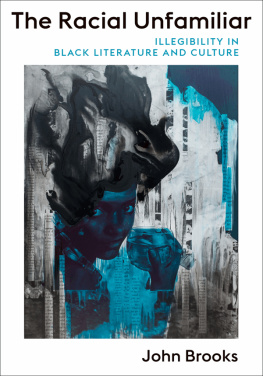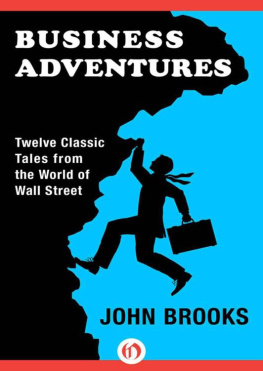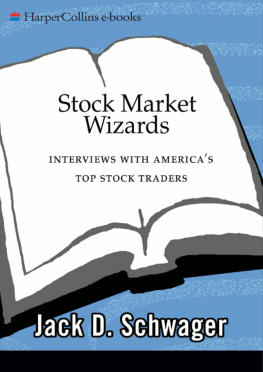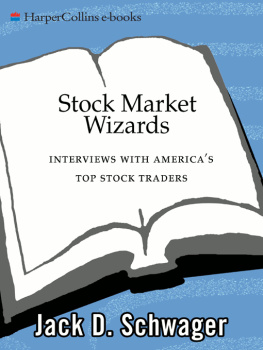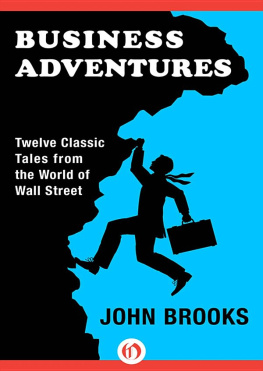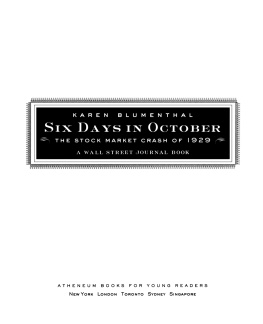Once in Golconda
A True Drama of Wall Street 19201938
John Brooks

Foreword
Golconda, now a ruin, was a city in Southeastern India where, according to legend, everyone who passed through got rich. Its riches faded, its fine buildings collapsed, and its glories disappeared, never to return.
That tends to be the way with legendary sources of unimaginable wealth. They flourish for a time, and then they go forever. Theres one exception. Its called Wall Street, a name that strictly speaking applies only to a narrow gully in the south of Manhattan, but that can be taken as a proxy for Tokyo, London, and other financial markets everywhere.
Unlike Golconda, Wall Street can come back from the dead. Although slumps follow booms, the grass never quite gets to grow over its pavements. Its a concrete tribute to the human spiritto ingenuity, to dynamism, to creativity, and, from time to time, to the willing suspension of disbelief. In the high wild times that occur every generation or so, when everyone makes money and it seems like a crime not to be rich, investors forget the lessons that their predecessors learned so painfully. They know, with absolute certainty, that this time it is going to be different.
In this book, John Brookswho was one of the most elegant of all business writersperfectly catches the flavor of one of historys best-known financial dramas: the 1929 crash and its aftershocks. Its packed with parallels and parables for the modern reader.
The great bull market of the 1920s was built on the growth of a completely new industry, based in Detroit as opposed to the Silicon Valley. It created a breed of business heroes, who passed easily from the top of big investment banks into the upper ranks of government. The most successful investments were to be found in a relatively small number of big companies. And it promised a new economic paradigm.
As President Coolidge explained at the end of 1927, America was entering upon a new era of prosperity. Speculation became respectable, and Wall Streeters generated the kind of glamour that goes with being an insider on the subject that everyone wants to talk about. In the perceptive words of an English journalist who arrived on the scene just before everything went wrong, If the attitude of Americans to the stock market proved anything, it proved that they believed in miracles. That if you try hard enough, you can make wonderful things happen. Then came the crash of 1929. Share prices recovered a bit the following year, before reaching a point that they were not to see again for nearly a quarter of a century.
The central character in Brookss story is Richard H. Whitney, who starts out at the top of the Wall Street establishment and ends up in Sing Sing. His story is an extreme example of another recurring feature of financial cycles: Bull markets create heroes and have a wonderful way of covering up mistakes, and worse.
Heroes can all too often come to believe that the rules dont apply to them, especially if they live and work in a narrow community securely cordoned off from the little people. Thats when the temptations start.
Richard Whitney didnt start out to be a criminalthe very notion of robbing a bank would have horrified this lofty and fastidious figure. Instead, he bent the rules, little by little, in the fond belief that the rising tide of the stock market would put everything right. When it didnt, he bent the rules some more. Even when he was exposed, his friends were unwilling to admit the truth.
In the words of a top man at J. P. Morgan, It never occurred to me that Richard Whitney was a thief. What occurred to me was that he had gotten into a terrible jam.
I first read Once in Golconda back in the 1970s, during those long dull years when the Dow was strugglng to break decisively through the 1,000 mark and when Wall Street was a place where you went to get your bonds underwritten. It seemed at the time like a wonderful fairy story, peopled by characters out of Scott Fitzgerald. Brookss storiesthe bomb outrage of 1920, the marvelous story of the bear raid on the Stutz Motor Car Company of Americastayed in my memory.
But I regarded those tales as artifacts from a distant age, with as much relevance to anything that was ever likely to happen again as the story of Golconda.
Rereading it in 1999, though, Im not so sure.
R ICHARD L AMBERT
The Financial Times
Contents
ONCE IN GOLCONDA
Golconda, now a ruin, was a city in southeastern India where, according to legend, everyone who passed through got rich. A similar legend attached to Wall Street between the wars.
Chapter One
Overtures: The Outrage
I
On Thursday, September 16, 1920, a few seconds after the Trinity Church bell had finished tolling noon, the pleasant fall air of downtown Manhattan (weather clear, temperature sixty-nine degrees, market up slightly) was rent by an enormous and devastating explosion. Emanating from a point on Wall Street a few yards east of the intersection of Wall and Broad, and directly between the marble edifice of J. P. Morgan & Company and the barred front of the brand-new United States Assay Officethat is to say, from the precise center, geographical as well as metaphorical, of financial America and even of the financial worldthe explosion darkened the area for several minutes with a huge cloud of greenish smoke, set fire to awnings twelve stories above the street, broke virtually every window in the immediate vicinity and some as much as a half-mile away, and spattered a wide area with hundreds of small, shrapnel-like iron slugs that, on later examination, appeared to be fragments of cut-up window sash weights. It pock-marked the austere faade of the Morgan building, at 23 Wall Street, on the southeast corner of the intersection, and blew in all of its north windows, causing a hail of glass fragments to fall on persons on the banking floor below. It bent the heavy bars protecting the Assay Office, on the north side of Wall next to the Sub-Treasury; this building largely escaped interior damage precisely because it had been designed to be a fortress. It shook to the foundations, but by miracle or chance did not materially damage, Wall Streets own church, Trinity, which stood, flanked by its famous old graveyard containing the bones of Alexander Hamilton, only a short block from the point of explosion. The toppling of Trinitys Gothic Revival spire, had it occurred, would have symbolized the disruption of things as they were as much as the defacing of Morgans itself.
At the New York Stock Exchange, on Broad Street near the southwest corner of the intersection with Wall, the blast sent hundreds of brokers and traders surging to the center of the trading floor in an effort to avoid glass falling from the rooms huge windows; there, driven from Scylla to Charybdis, they were confronted with the prospect of mass extinction by the great glass dome overhead, which threatened to fall but didnt. At the Bankers Trust Company, on the northwest corner, broken glass flew like leaves in a gale, and one of the iron slugs whizzed through the office window of Seward Prosser, the banks president, missing his head by a few inches.
Others were less fortunate than Prosser. Thirty persons were killed instantly or nearly so by the explosion, and injuries befell some three hundred more, of whom ten died later. But none of the dead were the kings and generals of finance, all of whose lives seemed to be as charmed with good fortune as Prossers. J. P. Morgan, the most famous man in Wall Street and the public symbol of its power, was on holiday in an English country house; of the five of his partners who were in the building when it was hit, all escaped injury except Morgans son Junius, who suffered a minor cut. Of the thirty who died at once, none were brokerage partners or senior bank executives, and only one was identified as a broker. Most of the others were Wall Streets attendants and privates, young or oldthe stenographers, clerks, bookkeepers, messengers, and porters who with untimely appetite had stepped out of their buildings a minute or two before noon on their way to an early lunch. Three were women, four were teenage clerks or messengers, one was a young banker of twenty-five, another was a retired businessman of sixty-eight. The value of the securities lost in the confusion was negligible, and as to property damage, which amounted to two or three million dollars, the owners of the buildings or their insurance companies could easily enough absorb that. Whatever the meaning of the explosion, it left Wall Streets power unscathed.

